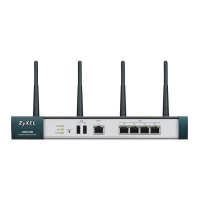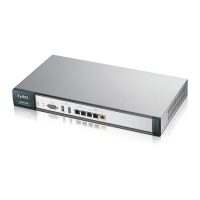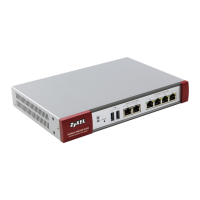Chapter 16 Route
UAG CLI Reference Guide
119
16.3 IP Static Route
The UAG has no knowledge of the networks beyond the network that is directly connected to the
UAG. For instance, the UAG knows about network N2 in the following figure through gateway R1.
However, the UAG is unable to route a packet to network N3 because it doesn't know that there is
a route through the same gateway R1 (via gateway R2). The static routes are for you to tell the
UAG about the networks beyond the network connected to the UAG directly.
Figure 15 Example of Static Routing Topology
16.4 Static Route Commands
The following table describes the commands available for static route. You must use the
configure terminal command to enter the configuration mode before you can use these
commands. See Section Table 59 on page 114 for information on input values.
Table 62 Command Summary: Static Route
COMMAND DESCRIPTION
[no] ip route {w.x.y.z} {w.x.y.z} {interface|w.x.y.z}
<0..127>
Sets a static route. The no command deletes a static
route.
ip route replace {w.x.y.z} {w.x.y.z} {interface|w.x.y.z}
<0..127> with {w.x.y.z} {w.x.y.z} {interface|w.x.y.z}
<0..127>
Changes an existing route’s settings.
show ip route-settings Displays static route information. Use show ip route
to see learned route information. See Section 17.2.5
on page 124.
[no] ip route control-virtual-server-rules activate Gives static routes priority over NAT virtual server
rules (1-1 SNAT). It also automatically gives policy
routes priority over NAT virtual server rules. Use the
no command to give NAT virtual server rules priority
over static routes.
show ip route control-virtual-server-rules Displays whether or not static routes have priority
over NAT virtual server rules (1-1 SNAT).

